My first impression of Moscow was of over the top luxury and grandeur, not from the train station, the kremlin or any of the other public buildings but from the metro station I arrived at. Opening in 1935 the Moscow metro was built under Stalin as “palaces to the people” and all the extravagance once reserved for the Tsars was made accessible to the working class Muscovite. This is most apparent on the oldest metro line, the Red Line where the stations are full of mosaics, chandeliers, marble and sculpture. One station features over 40 bronze sculptures depicting ideal Soviet citizens, you’re able to rub the dog’s nose for luck, pat the rooster for wealth and stroke a baby’s foot for fertility. My favourite station, done in art deco style, is used as a concert hall once a year. When the trains stop running the Orchestra sets up a hosts a concert there making use of the stations excellent acoustics. Another particularly notable station features huge stained glass windows. As the Soviet Union expanded into Poland they took control of a glass factory that had almost finished the windows for a new church. As religion was banned the stained glass windows were taken for the metro, religious sections being replaced with occupations the USSR deemed appropriate: teacher, architect, farmer and artist among them. Even in an economy still reeling from the effects of the war no expense for spared and the Moscow Subway system is widely regarded as one of the most beautiful in the world.
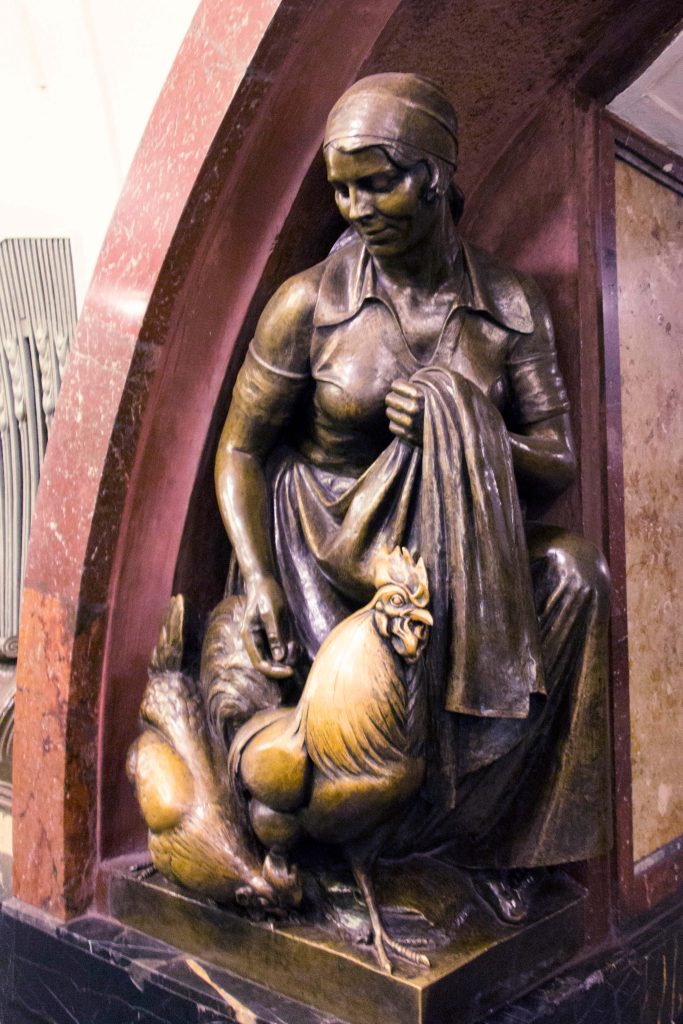
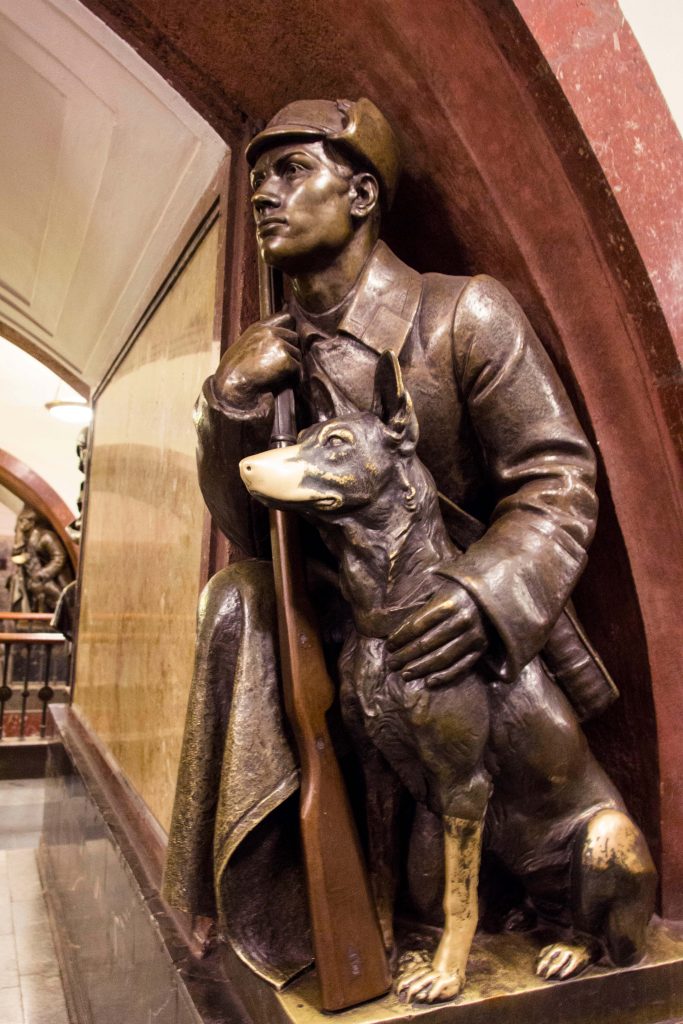
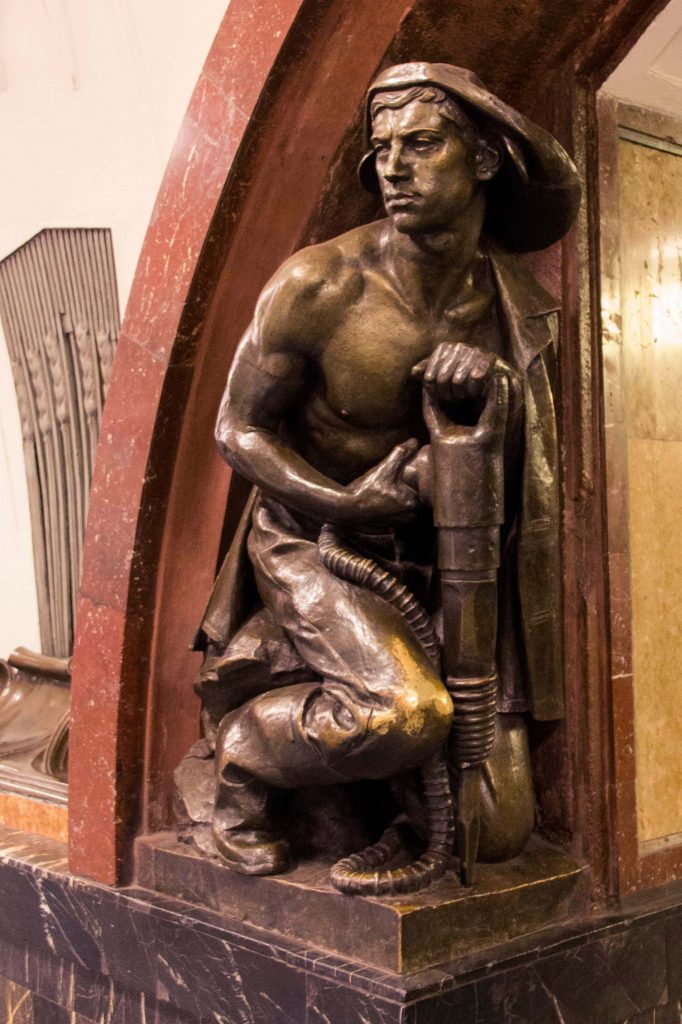

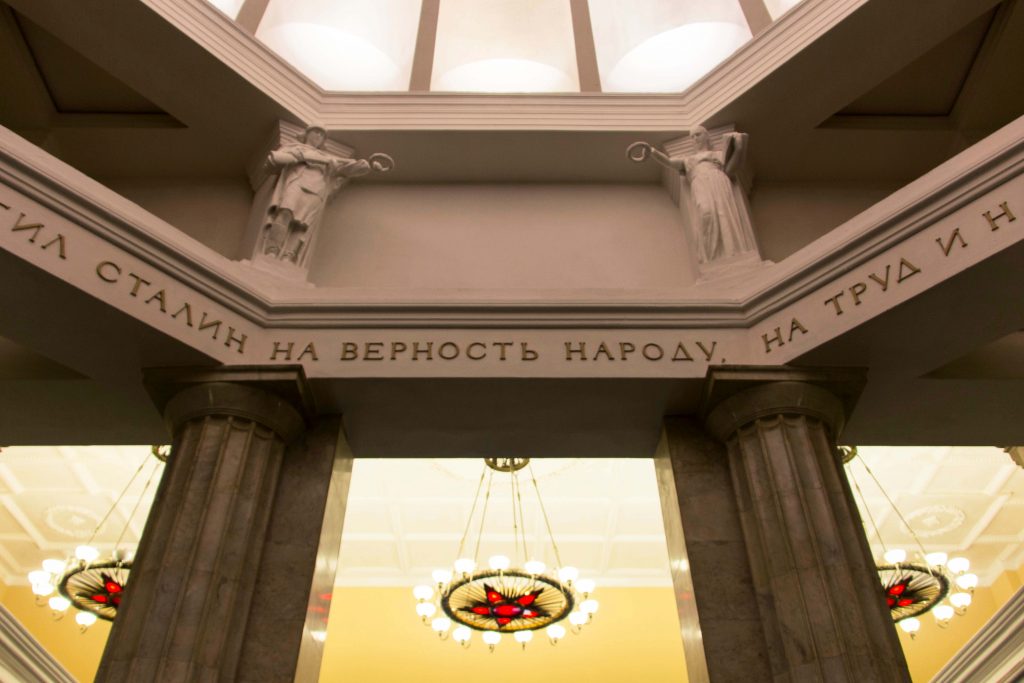
I spend my first afternoon visiting the Kremlin, while the moat has long been replaced with parks and the communist star now stands in place of the Tsar’s Eagle the Moscow Kremlin is still a formidable compound. It may have been given up for Napoleon, but the fact that the cannons decorating the Armoury were taken from the retreating army is testament to the fact that it was never out of Russian control for long. The Kremlin is also home to the Tsar Cannon and the Tsar Bell, both the largest in the world and both with equally absurd stories. The cannon (weighing over 39 tons) was too large to be dragged to battle and had never killed anyone and the bell was involved in a huge fire not long after its casting. In an effort to cool the bronze water was thrown upon it and the heat shock cracked the bell meaning it has never been rung (it was not actually lifted from the pit it was cast in until almost a century later).
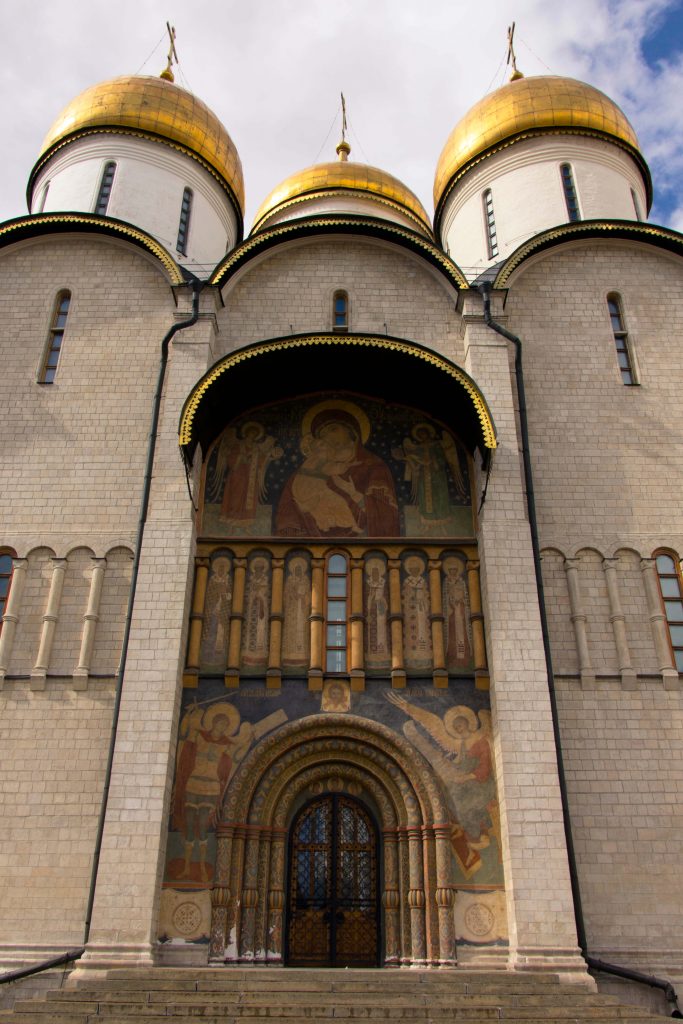
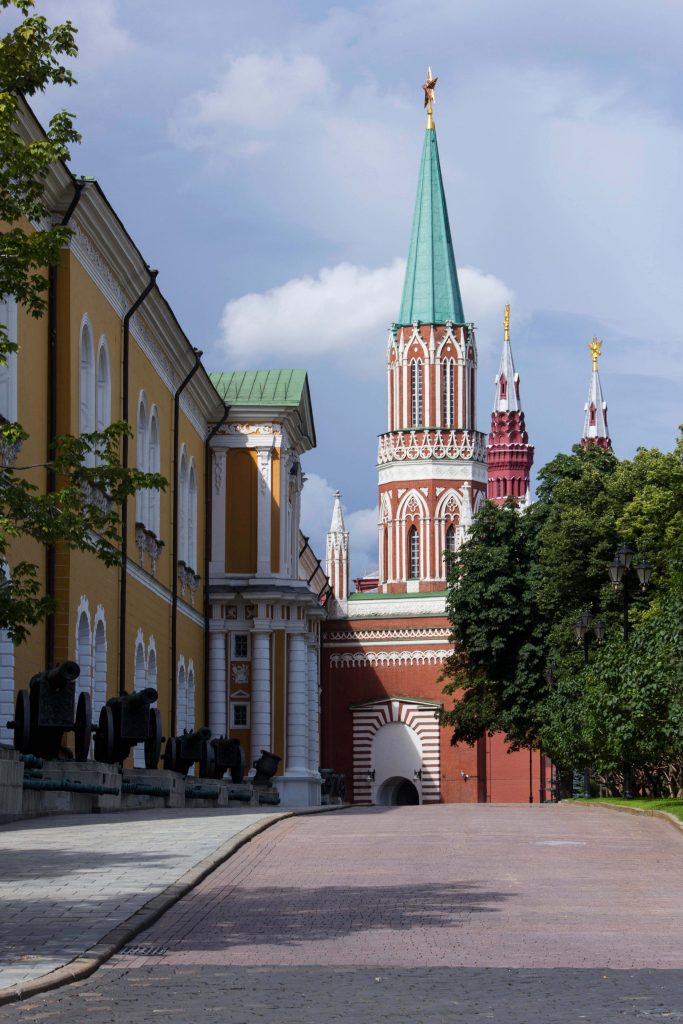
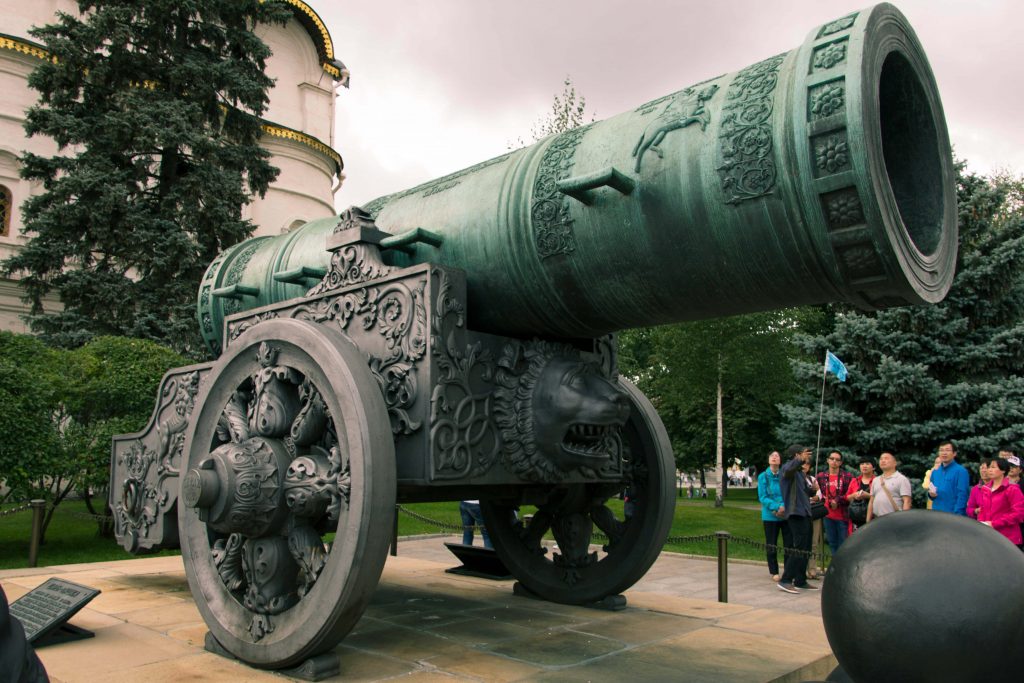
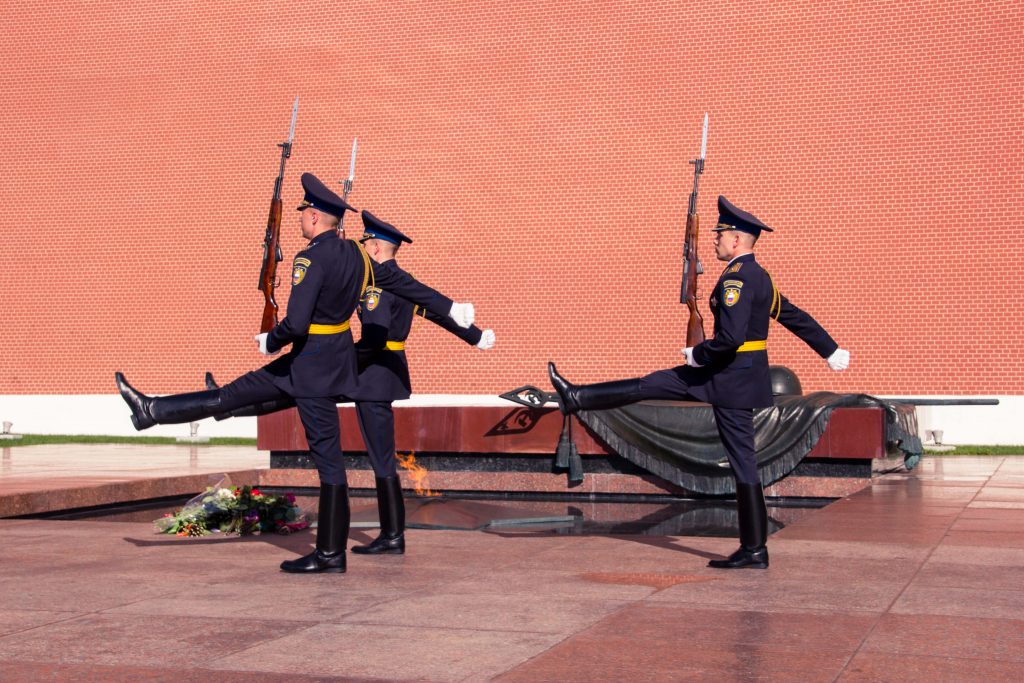
I also went to visit the Museum of Cosmonauts to learn a little more about the USSR’s space program (and see the other side of the Space Race). As well as the stuffed bodies of Belka and Strelka (first animals to return from space) there was a number of uniforms, spacecraft and other bits and pieces (much of it original) and there was enough English translation to be able to understand most of it. It was also clear just how idolised Yuri Gagarin was as the USSR’s first cosmonaut and the first man in space, as well as his space suit and many of his personal belongings the museum also featured a number of paintings, murals and sculptures dedicated towards him, although perhaps not without reason.
As well as the Kremlin, the Red Square also featured Saint Basils Cathedral (perhaps Russia’s most famous building) and GUM, a department store that has been there since 1893. While now it hosts every designer brand imaginable, in the 70’s and 80’s people would line up for days to get inside and buy the very limited stock. It was in here that I had my first taste of Kvass, a traditional Russian drink made by fermenting rye bread and raisins. Whist it was marked as non-alcoholic and freely fed to children I later discovered it was about 2% alcohol, not strong but a large cup still seemed ill advised for adolescents. This didn’t seem to stop Russian parents from handing it out like it was juice though. I also spent far longer that is reasonable window shopping in the Leica store but as the cameras were all well outside my price range I settled for finding something at the flea market the next day.
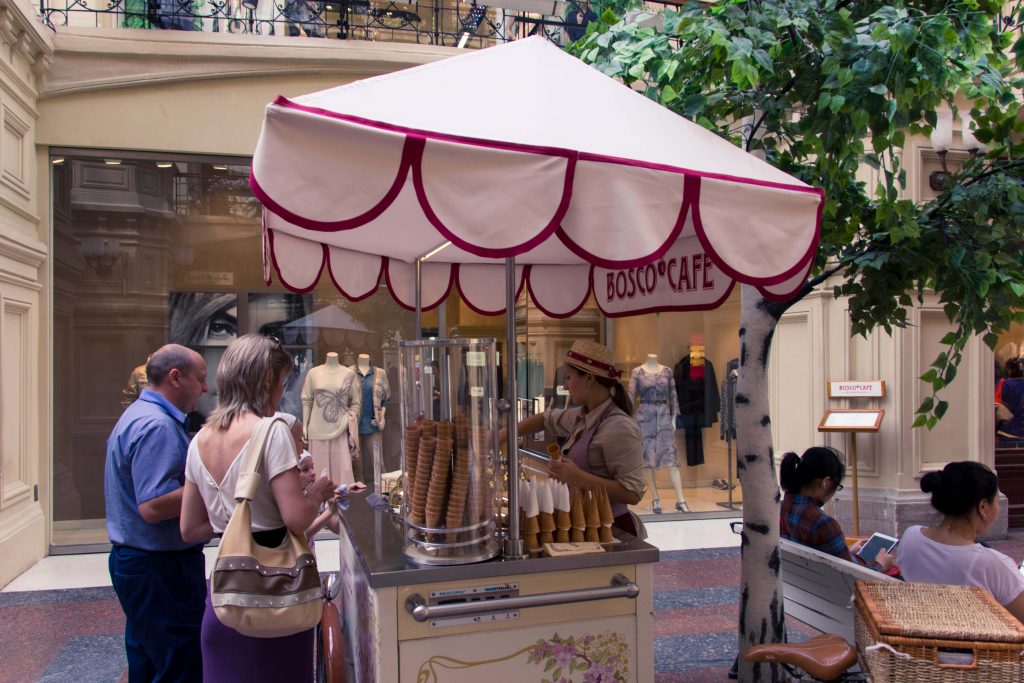
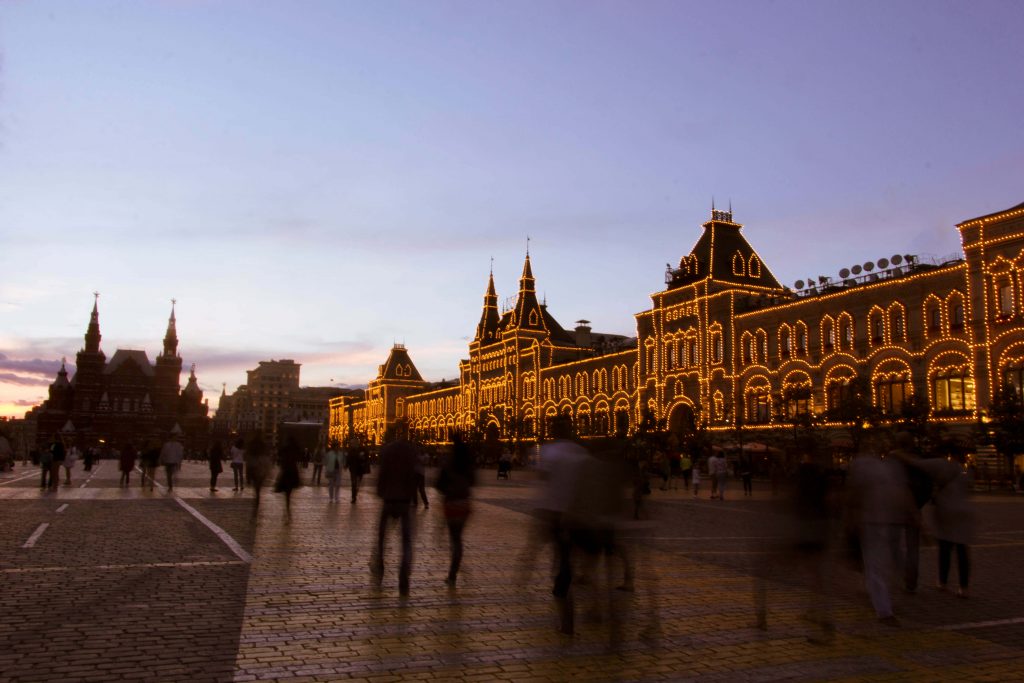
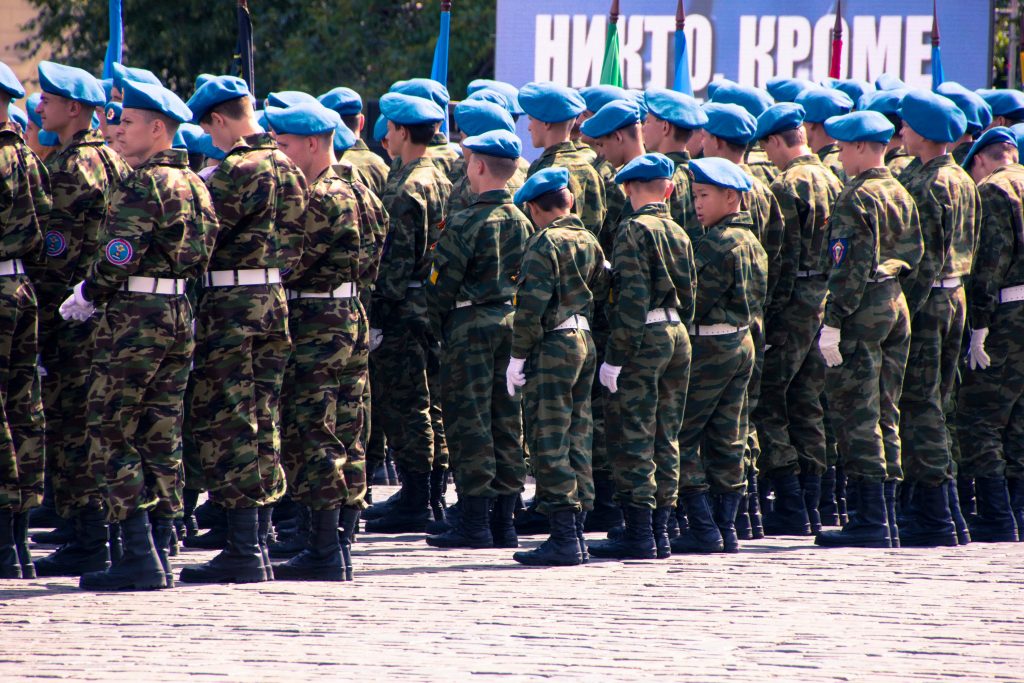
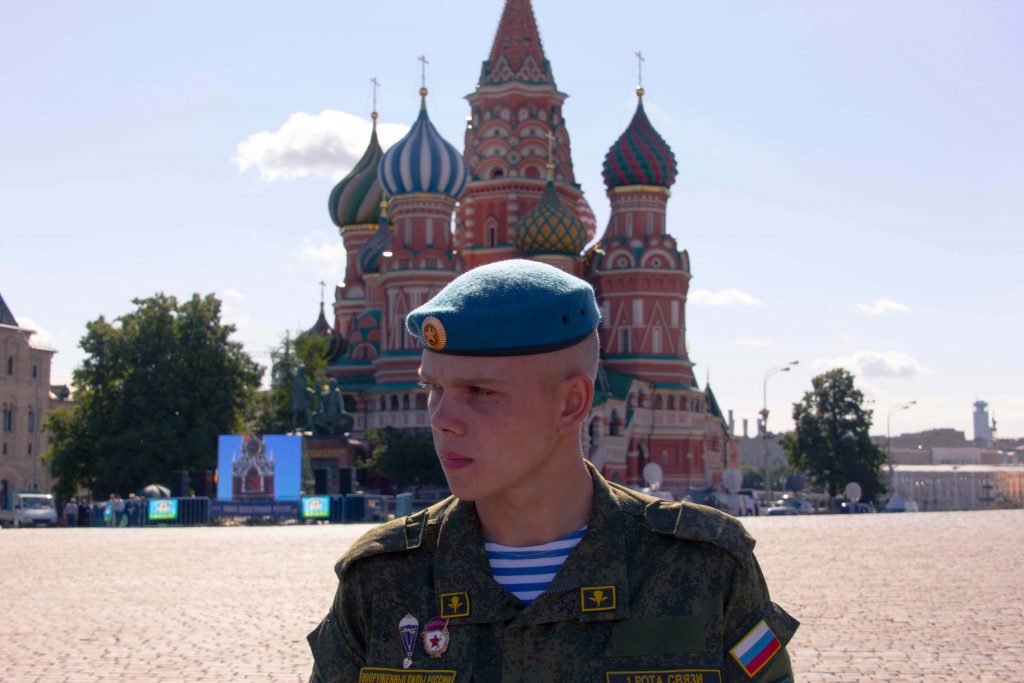

Ice cream cart at GUM, Red Square at night, military demonstration in the Red Square, St Basil's Cathedral
The Izmailovo flea market is just a short metro ride away from the Moscow city centre and it sells everything from souvenirs to fur coats. I was on the lookout for some of the old Soviet film cameras that were originally made in an attempt to create a Leica copy but soon evolved to become a product in their own right. I picked up a Zenit-E, a model that was made in the thousands but mine was a special edition for the 25th Annual Soviet Congress and as such featured the flag on the corner of the camera, it may have cost me more but I though it a perfect souvenir.
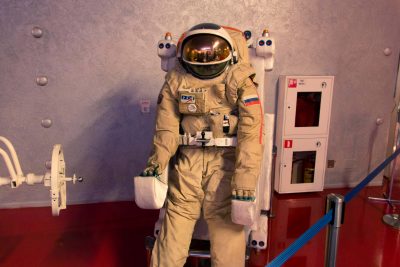
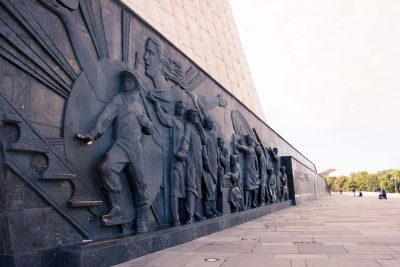

Kate joel August 28, 2015 at 6:44 pm
Fabulous work Lucy. Love the photos and the detail. Well written. Keep them coming!